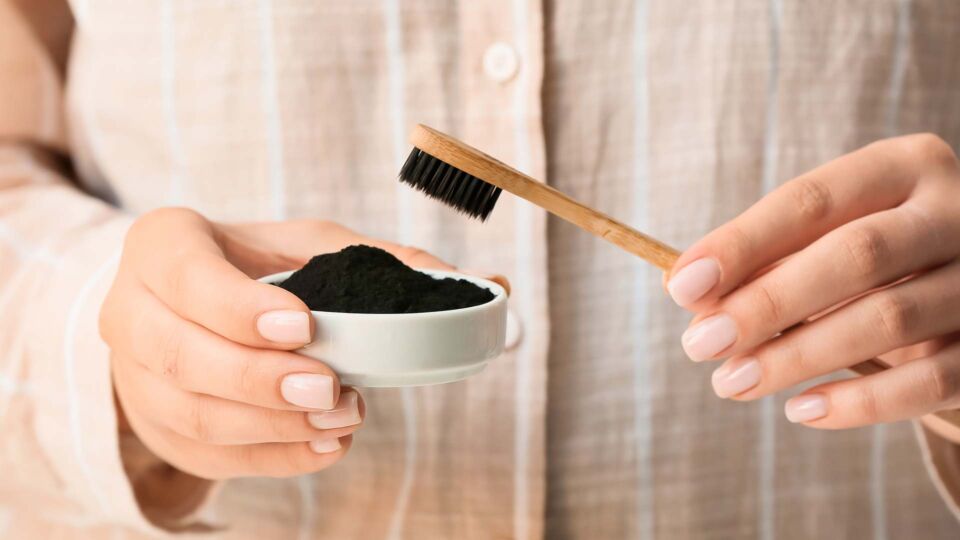The Lowdown on Toothache Home Remedies

If you do a quick search on the Internet for “DIY toothache remedies”, you will find dozens of results touting to kill tooth pain. However, how effective are they, and do they work?
We give you the lowdown on some of the most popular DIY remedies and their effectiveness:
Clove Oil
How it’s used: Dilute the clove oil with water and dip a small piece of clean tissue or cotton pellet into the oil mixture. Gently squeeze the excess clove oil from the tissue or cotton pellet, and apply it onto your painful tooth or gum.
Does it work?
Clove oil contains eugenol, a natural painkiller that causes numbness upon contact. Although this can relieve the pain and swelling, its effect is only temporary. It does not remove the cause of toothache like tooth decay, gum diseases, or a cracked tooth. Also, it can irritate the gum tissues if used undiluted.
Peppermint Tea Bag
How it’s used: Cool the peppermint tea bag in your refrigerator, and apply it onto the painful area. Leave it for about 20 minutes. Repeat if the pain returns.
Does it work?
Peppermint tea contains menthol, which can ease toothaches, similar to clove oil. It is safe to use, but the numbing effect is temporary and it cannot remove the cause of pain.
Salt Water Rinse
How it’s used: Mix 1 teaspoon of salt (about 5g) with one cup of warm water (about 250ml). Then, gargle the solution for about 30 seconds before spitting it out. Do not swallow the solution. You can repeat this several times a day if needed.
Does it work?
Salt water rinse can help to loosen the debris in your mouth and flush the infected areas, providing temporary relief. It is the safest DIY remedy that you can try.
Hydrogen Peroxide Rinse
How it’s used: Mix 3% hydrogen peroxide with water in 1:1 ratio, and gargle the mixture for 30 seconds.
Does it work?
Hydrogen peroxide rinse can also cleanse the infected area. It is also believed that hydrogen peroxide is better than salt water because of its superior antibacterial effect.
Do not use hydrogen peroxide undiluted, as you risk irritating or burning your soft tissues. Avoid swallowing it as well, as it can cause throat burning, vomiting, or abdominal pain. If swallowed by children, it may cause severe poisoning too.
Alcohol Rinse
How it’s used: It is believed that you can relieve tooth pain by taking a large sip of hard liquor such as whiskey and gargle it in your mouth for a few minutes before spitting it out. You can also hold the liquor in your mouth, near the affected tooth. The alcohol is supposed to reduce the toothache by numbing the area.
Does it work?
Many people believe hard liquor can kill bacteria and ease tooth or gum pain. However, it is simply an old wives’ tale. There is no evidence showing that it can clear infections or have any antibacterial properties.
Garlic
How it’s used: Mash the garlic using a mortar or food processor, and then apply the paste onto the painful tooth.
Does it work?
It is commonly assumed that garlic can relieve tooth pain because it contains allicin, a natural bacteria-killing compound. It may give you temporary relief if your tooth pain is caused by an infection. While generally safe, use it in moderation as you will get bad breath from it.
Oil Pulling
How it’s used: It is done by swishing a tablespoon of oil (typically coconut, olive or sesame oil) in the mouth with empty stomach for 20 minutes.
Does it work?
It is widely believed that oil pulling can relieve toothache by detoxifying the mouth and removing the infection. Some articles on the Internet claim that the oil acts like a magnet, literally pulling the bacteria and toxins out from the tooth. Also, they believe that the oil can repair the damaged tooth structure.
These are just myths – oil does not heal nor repair infected teeth. It may be a good moisturizer for lips, but definitely not a home remedy for toothache.
Colloidal Silver
How it’s used: First, brush a small amount of colloidal silver onto the troubled tooth with a toothbrush. Next, rinse your mouth with colloidal silver for about 7 to 10 minutes. Repeat this procedure several times throughout the day. You should also ingest the colloidal silver several times a day, but no more than a total of 8 ounces (230grams) in one day.
Does it work?
There is no evidence proving that it can cure tooth decay. Various Internet sources tout colloidal silver as the simplest and most effective way to heal infected teeth and gums. Regardless of the claims, silver has no health benefit, nor is it an essential mineral for the body.
Furthermore, there are no FDA-approved over-the-counter or prescription drugs containing silver. If taken, it can cause argyria, a permanent bluish-grey discoloration of the skin. In short, colloidal silver is definitely not recommended as home remedy for toothache.
Summing It Up
From green tea powder to activated charcoal, there are many more remedies that people believe can help treat their tooth and gum pain. The truth is, these treatments will only relieve the pain and not eliminate the root cause. In fact, some may even endanger your health! If you experience any tooth or gum pain, these should only be used as temporary pain relief while you fix an appointment with your dentist to get your teeth examined.



